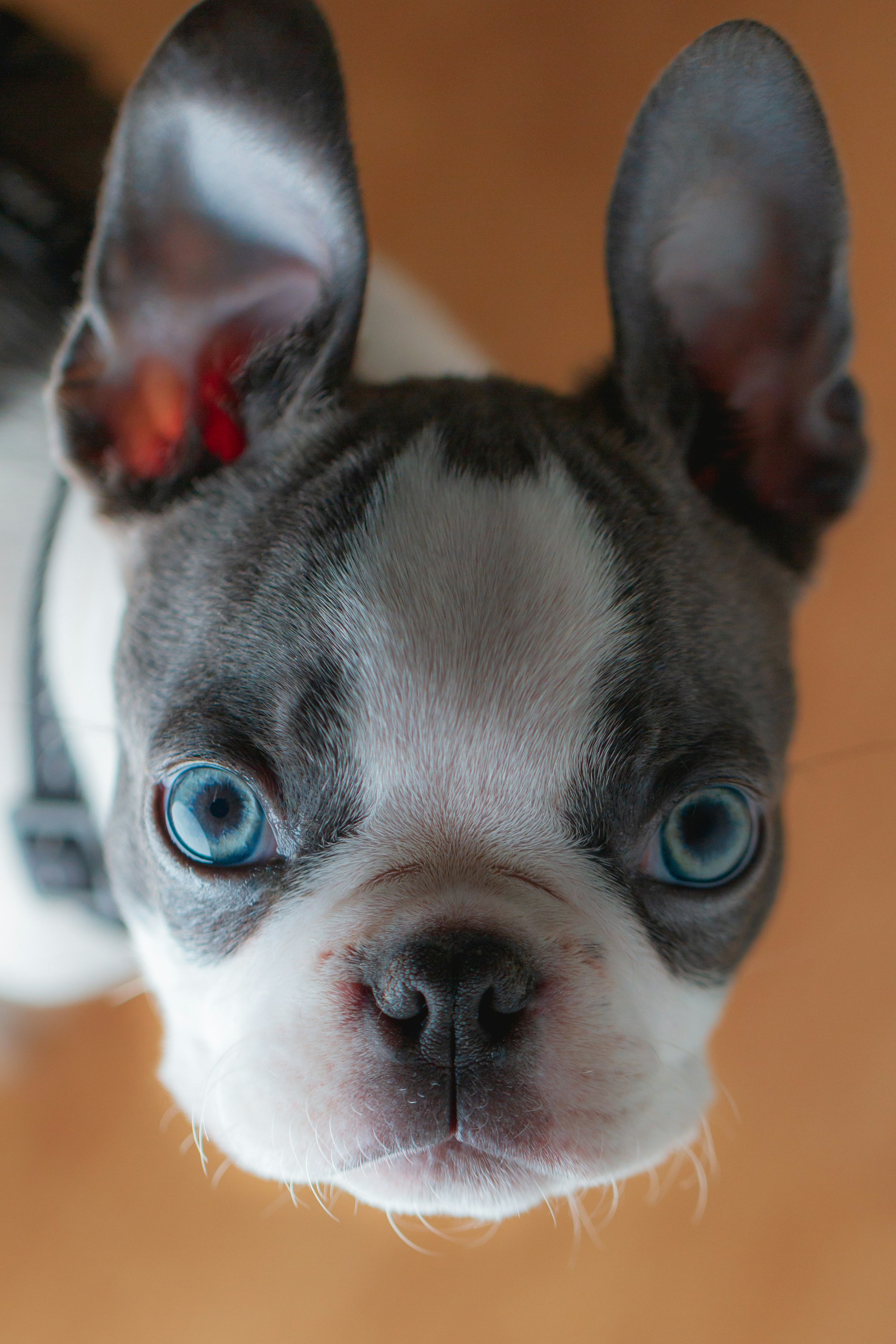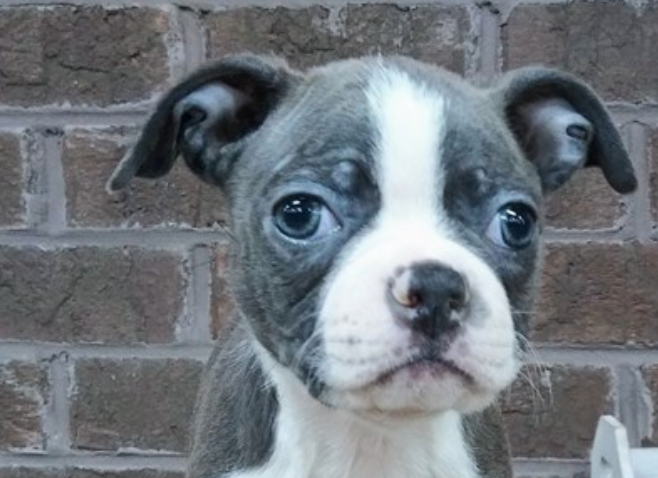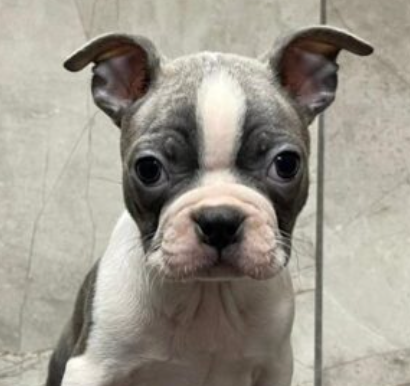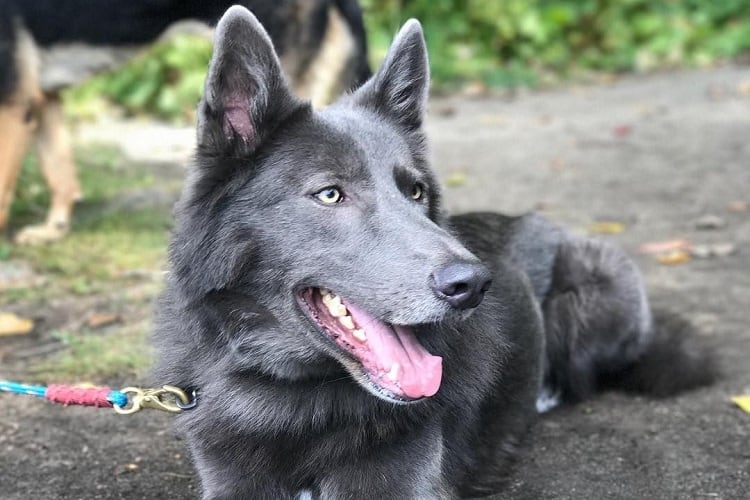The Blue Boston Terrier is a unique variation of the classic Boston Terrier, a small, compact, and muscular dog breed originating in the United States. With their endearing "tuxedo" coat, friendly disposition, and large, expressive eyes, Boston Terriers are often called the "American Gentleman" of dog breeds.
The Blue Boston Terrier stands out from its counterparts with its striking blue-grey coat color, which results from a rare dilution of the typical black coat pigment. In this article, we'll explore the characteristics, history, temperament, and care requirements of this distinctive and captivating breed.
The Appearance of a Blue Boston Terrier
The Blue Boston Terrier is a small, sturdy dog with a distinct blue-grey coat that sets it apart from other Boston Terriers. This breed typically weighs between 10 to 25 pounds and stands at a height of 15 to 17 inches at the shoulder. They possess a square, compact body with a muscular build, a feature they share with their traditional counterparts.
Blue Boston Terriers have a short, smooth coat that showcases their signature blue hue, which can range from a light silvery blue to a darker steel blue. Their coat is often complemented by white markings on their face, chest, and paws, giving them the well-known "tuxedo" appearance. This breed's large, round, dark eyes are particularly expressive, and their bat-like ears stand erect, contributing to their unmistakable charm.
Despite their unique coat color, Blue Boston Terriers share the same breed standard as other Boston Terriers. They have a short, slightly arched neck, a broad chest, and a level topline. Their limbs are straight and strong, and their tail is short, either straight or screw-shaped, but never docked.

The Genetics Behind the Blue Hue in Boston Terriers
The blue color in Blue Boston Terriers is the result of a genetic mutation that dilutes the black pigment in their coat. This mutation occurs in a gene called the MLPH gene, which affects the distribution of melanin within the hair shafts. When both parents carry the dilution gene, it results in a blue-colored coat in their offspring.
It is essential to note that breeding specifically for the blue color can carry potential health risks. Some Blue Boston Terriers may be prone to Color Dilution Alopecia (CDA), a condition that can cause hair loss and skin problems. Responsible breeders take care to minimize these risks by carefully selecting breeding pairs and monitoring the health of their puppies.
Blue: An Unofficial Yet Enchanting Boston Terrier Color
While the blue color is undoubtedly captivating, it is not officially recognized by the American Kennel Club (AKC) or other major breed clubs. The AKC breed standard for Boston Terriers lists black, brindle, and seal as the only acceptable coat colors, along with the white markings that create the tuxedo pattern. Blue Boston Terriers may not compete in conformation shows due to their non-standard coat color.
However, the lack of official recognition doesn't diminish the charm and appeal of Blue Boston Terriers as pets. They possess the same friendly, intelligent, and affectionate temperament as their standard-colored counterparts. With proper socialization, training, and care, a Blue Boston Terrier can be a delightful and loving companion for individuals and families alike.

Variations Within the Blue Boston Terrier Breed
Although Blue Boston Terriers are generally characterized by their unique coat color, there are some variations within the breed. These variations can include different shades of blue, as well as patterns and markings that set each dog apart.
Shades of blue in their coats can range from a pale silvery-blue to a darker slate grey-blue, and sometimes even a bluish-brindle. The distribution of white markings can also vary, with some dogs having more extensive patterns on their face, chest, neck, and paws.
Additionally, Blue Boston Terriers may have variations in eye color, with some dogs sporting blue or grey-blue eyes that complement their coat color. However, most Blue Boston Terriers have the classic dark, round eyes associated with the breed.
Understanding Color Dilution Alopecia
Color Dilution Alopecia (CDA) is a genetic skin condition that can affect dogs with diluted coat colors, such as Blue Boston Terriers. It is caused by a mutation in the MLPH gene, which is responsible for the distribution of pigment within the hair shafts. This mutation can lead to abnormal hair structure, making the hair brittle and prone to breakage.
Dogs affected by CDA may experience hair loss, thinning of the coat, and skin problems such as flakiness, itchiness, or infections. The severity of the condition varies from dog to dog, and some may be asymptomatic. Treatment options for CDA are limited, but managing secondary skin infections and maintaining good skin health can help improve the dog's quality of life.
AKC Recognition of Blue Boston Terriers
The American Kennel Club (AKC) does not officially recognize Blue Boston Terriers as a standard color within the breed. According to the AKC breed standard for Boston Terriers, the only acceptable coat colors are black, brindle, and seal, with white markings necessary to create the characteristic tuxedo pattern.
Due to their non-standard coat color, Blue Boston Terriers are not eligible to compete in AKC conformation shows. However, this does not affect their eligibility to participate in other AKC events, such as obedience, agility, and rally competitions.
Despite the lack of official recognition, Blue Boston Terriers continue to be popular pets among dog enthusiasts. Their unique coat color, combined with their friendly and affectionate nature, makes them an appealing choice for many families and individuals.
Exploring the Different Types of Blue Boston Terriers
Within the Blue Boston Terrier category, there are several variations based on coat color, markings, and patterns. These distinctions add diversity and individuality to these already unique dogs. Some of the most common types of Blue Boston Terriers include:
Solid Blue: This type features a solid blue coat with the standard white tuxedo markings on the chest, neck, muzzle, and paws. The blue color can range from pale silvery-blue to dark slate grey-blue.
Blue Brindle: These Blue Boston Terriers have a blue coat with a brindle pattern, which consists of irregular, dark stripes on a lighter blue background. This pattern adds depth and texture to the coat, making it even more visually striking.
Blue and White: This variation showcases more extensive white markings than the standard tuxedo pattern. These dogs may have larger white patches on their face, neck, chest, and legs, creating a unique contrast with the blue coat.
Blue Fawn: These Blue Boston Terriers have a fawn-colored coat with a blue hue. The blue tint is often subtle, giving the dog a unique and elegant appearance.
Blue Tricolor: This rare variation features a blue coat with tan points and white markings. The tan points can be found above the eyes, on the cheeks, and on the legs, while the white markings create the classic tuxedo pattern.
It is essential to note that breeding for specific coat colors and patterns can sometimes lead to health issues, such as Color Dilution Alopecia. Responsible breeders prioritize the health and well-being of their dogs over cosmetic traits and work to minimize the risks associated with breeding for specific colors or patterns.
Evaluating the Blue Boston Terrier as a Pet
Blue Boston Terriers make fantastic pets for many reasons. Their small size, low-maintenance coat, and friendly temperament make them suitable for various living situations, including apartments and larger homes. Here are some factors to consider when deciding if a Blue Boston Terrier would make a good pet for you:

Temperament of the Blue Boston Terrier
Blue Boston Terriers, like all Boston Terriers, are known for their friendly, affectionate, and intelligent nature. They are great with children and other pets, making them excellent family dogs. They also tend to be eager to please and highly trainable, which can make obedience training and socialization enjoyable experiences.
Exercise of the Blue Boston Terrier
Although they are small dogs, Blue Boston Terriers are energetic and require regular exercise to stay healthy and happy. Daily walks and play sessions can help meet their physical needs. Additionally, their intelligence and agility make them well-suited for dog sports, such as obedience, rally, and agility.
Grooming of the Blue Boston Terrier
The short, smooth coat of a Blue Boston Terrier requires minimal grooming. Regular brushing can help remove loose hair and maintain a healthy coat. Additionally, occasional bathing, nail trimming, and ear cleaning are necessary to keep them clean and comfortable.
Health of the Blue Boston Terrier
As mentioned earlier, Blue Boston Terriers may be at risk for Color Dilution Alopecia due to their coat color. It is crucial to work with a responsible breeder who prioritizes the health of their dogs. Regular veterinary check-ups and a balanced diet can also help maintain overall health.
Adaptability of the Blue Boston Terrier
Blue Boston Terriers are adaptable dogs that can adjust well to different environments. They can thrive in both urban and rural settings, as long as they receive adequate exercise, socialization, and mental stimulation.
Final Thoughts
In conclusion, the Blue Boston Terrier is a captivating and charming variation of the classic Boston Terrier breed. Their striking blue-grey coat sets them apart, making them an eye-catching and unique companion. Despite not being officially recognized by the AKC due to their non-standard coat color, Blue Boston Terriers possess all the endearing qualities that make Boston Terriers such beloved pets.
These affectionate, intelligent, and adaptable dogs are well-suited to various living situations and can make excellent companions for individuals and families. It is essential to work with a responsible breeder who prioritizes the health and well-being of their dogs, as breeding for specific coat colors can sometimes lead to health issues, such as Color Dilution Alopecia.
With proper care, socialization, and training, a Blue Boston Terrier can be a delightful and loving addition to your home. Their unique appearance, coupled with their friendly and affectionate nature, makes them a truly special breed that is sure to capture the hearts of dog enthusiasts everywhere.
For more helpful articles about pet-parenting tips, check out the Off Leash blog at TryFi.com.
Want to know more about TryFi.com? The Fi Dog Collar is a GPS tracking collar that not only keeps track of your dog’s location, activity levels, and sleep patterns, but it also alerts you if your dog escapes your backyard. This is the fastest way to find your dog after an escape. Try the Fi Dog Collar today!






